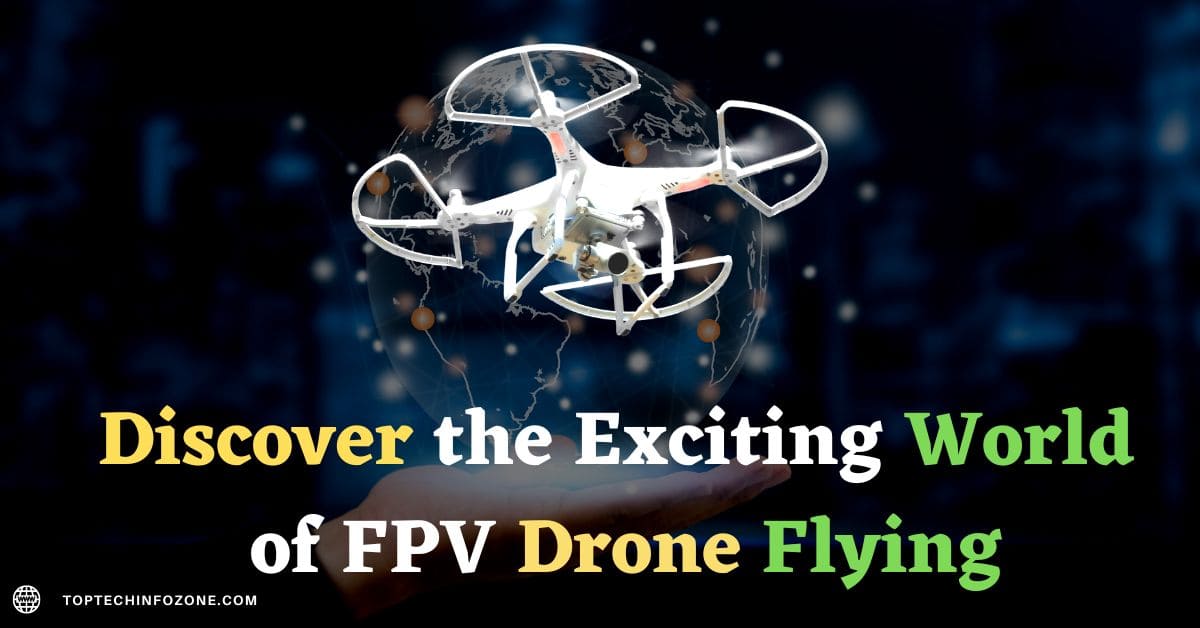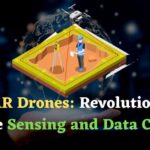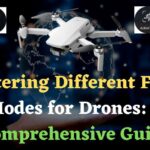Are you ready to take your drone flying experience to the next level? Look no further than FPV drone flying! FVP drones have ability of taking breath taking bird eye view shots. FPV drone flying will provide you with a new way to experience the world from a whole new perspective.
The use of drones has increased significantly in recent years, leading to the development of various types of drones designed for different purposes. In this article, we aim to provide you with a comprehensive understanding of what FPV drones are, how they work, and what makes them unique. Read on to discover all the amazing possibilities FPV drone flying has to offer! From flying with DJI FPV Drones to developing your skills, we have everything you need. Embark on the adventure of FPV Drone Racing now!
What are FPV Drones?
The pilot experiences the flight in a first-person view through FPV goggles or screen as FPV stands for “First Person View” and designers created FPV drones for this purpose. FPV drones are remote-controlled aircraft with FPV cameras and antennas for FPV drone flying, allowing pilots to see exactly what the drone sees in real-time. They are typically designed for use in aerial photography and videography, as well as for racing and other high-speed competitions.
Similarities and Differences with Traditional Drones:
FPV drones and traditional drones may look similar, but they differ in the way they are flown. Both FPV drones and traditional drones have FPV cameras, and pilots can opt for either FPV or traditional flying, depending on their preference.
For instance, traditional drones can be flown in FPV mode by enabling the onboard camera, while FPV drones can have the camera disabled for a more conventional flying experience.
Based on our experience we prefer FPV drones over traditional drones.
Analog vs Digital FPV Drone:
When it comes to FPV (First Person View) drone racing, pilots have two choices: analog or digital. Both have their pros and cons, and the choice between them will ultimately come down to personal preference, budget, and specific needs.
What is Analog FPV?
Analog FPV is the older technology, but it’s still widely used. It operates on the same frequency bands as analog TV broadcasts and uses analog signals to transmit video.
This type of system is typically less expensive than digital FPV systems, making it an attractive option for hobbyists and beginners.
What is Digital FPV?
Digital FPV systems use digital signals to transmit video, which provides several benefits over analog systems.
First, digital signals are less susceptible to interference and provide a cleaner, more stable image. Second, digital systems can transmit data over longer distances without degradation of the signal. Third, digital systems can provide additional features, such as low latency, high-definition video, and even an on-screen display (OSD).
Advantages of Analog FPV
Analog FPV systems have a few advantages over digital systems.
The first is that they’re typically less expensive, making them a more budget-friendly option for hobbyists and beginners. Additionally, analog systems are often more straightforward and easier to set up and use, which can be appealing for those who are just starting out with FPV drones.
Advantages of Digital FPV
Digital FPV systems offer several advantages over analog systems.
First, digital signals are less susceptible to interference, providing a cleaner, more stable image. Second, digital systems can transmit data over longer distances without degradation of the signal.
Third, digital systems can provide additional features, such as low latency, high-definition video, and even an on-screen display (OSD). Additionally, digital systems can be easier to troubleshoot and diagnose when things go wrong.
History of FPV Drones:
The evolution of consumer drones has come a long way since the first commercially available drone was introduced in the early 2000s. Here is a brief overview of the key milestones in the evolution of consumer drones:
- Early 2000s: Initially, military and industrial applications introduced commercially available drones. These early drones were large, expensive, and complex to operate.
- Mid-2000s: Smaller and more affordable alternatives to larger industrial drones emerged as consumer drones. These early consumer drones had limited flight time, range, and capabilities.
- Late 2000s: The introduction of advanced technologies such as GPS, sensors, and cameras led to a significant improvement in the performance and capabilities of consumer drones.
- Early 2010s: The growth of social media and the popularity of aerial photography and videography led to a surge in demand for consumer drones. This resulted in a rapid expansion of the market and the introduction of new models and brands.
- Mid-2010s: Consumer drones started to gain widespread popularity, with advances in battery life, range, and stability making them more accessible and easier to use.
- Late 2010s: The introduction of compact and lightweight drones, such as foldable drones, made them even more portable and accessible for consumers.
- Early 2020s: The COVID-19 pandemic accelerated the adoption of consumer drones, with remote work and social distancing measures driving demand for aerial photography and videography.
- Today, consumer drones continue to evolve with the introduction of advanced technologies such as obstacle avoidance, AI-powered flight modes, and enhanced camera capabilities. 5G technology revolutionizes the drone industry by improving communication and control capabilities, as demonstrated through its use in drones.
Throughout this evolution, consumer drones have become smaller, more affordable, and more capable, making them accessible to a wider range of users. The growth of the market and the introduction of new technologies and innovations will continue to shape the future of consumer drones.
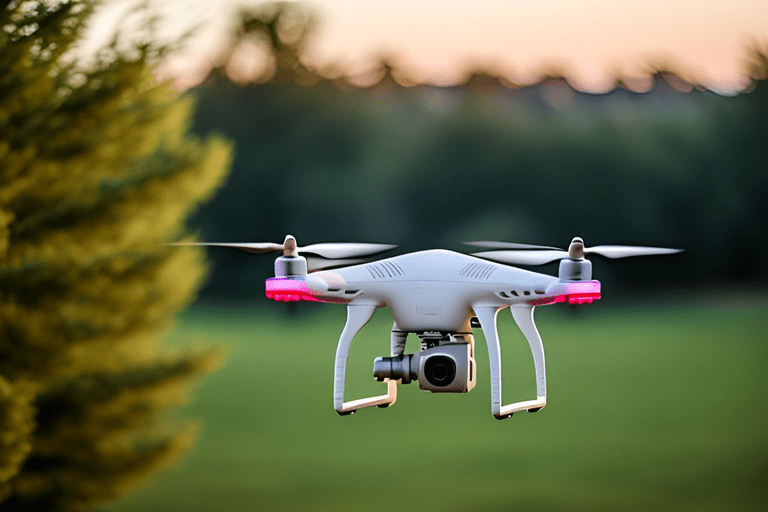
You may also like :
Types of FPV Drones:
- Racing Drones: Designers specifically created racing drones for high-speed racing competitions. They are lightweight, agile, and have powerful motors that enable high speeds. Advanced control systems allow pilots to make quick and precise turns.
- Freestyle Drones: Designers created freestyle drones for performing aerial tricks and stunts. They are typically larger and more durable than racing drones, able to withstand impacts from high-speed flights and flips. Slower response time allows for greater control during tricks.
- Aerial Photography: Designers created aerial photography drones for taking pictures and videos from the sky. High-quality cameras and stable flight characteristics make them ideal for capturing aerial footage. They often have longer flight times than racing or freestyle drones, allowing pilots to capture more footage.
- Agriculture Drones: Designers created agriculture drones for use in agriculture and farming. Equipped with sensors and cameras, they allow farmers to monitor crops, assess soil conditions, and detect crop issues. They can also be used for precise crop spraying and seeding.
- Inspection Drones: Industries such as oil and gas, construction, and power transmission use inspection drones for inspecting structures and equipment. Equipped with cameras and lighting, they allow pilots to inspect hard-to-reach areas, reducing the need for human inspection.
Key Features to Consider When Choosing an FPV Drone
- Flight Time: The flight time of an FPV drone is an important factor to consider. You want to make sure you have enough time to complete your mission, whether that’s racing, capturing aerial footage, or inspecting a structure.
- Camera Quality: The quality of the camera on an FPV drone is also important. For aerial photography and inspection, you’ll want a high-quality camera with good resolution and stability.
- Control Range: The control range of an FPV drone is the distance it can fly from the pilot while still maintaining control. You’ll want to make sure the control range is sufficient for your needs.
- Agility and Speed: Agility and speed are important factors to consider for racing and freestyle drones. You’ll want a drone that is fast and responsive, with good manoeuvrability.
- Durability: Durability is an important factor to consider, especially for freestyle drones that will be performing stunts and tricks. You’ll want a drone that can withstand impacts and still function properly.
FPV Drone Flying Starter Kit (FPV Drone Kit Components):
The components used in high-performance FPV drone:
- The Heart of Your FPV Drone: The Flight Controller
- A Clear View from Above: The FPV Camera
- The Eyes and Ears of Your Drone: The Video Transmitter and Receiver
- Powering Your FPV Drone: The Battery
- The Wings of Your Drone: The Motors
- The Final Touch: Propellers
How to start FPV Drone flying?
So, how to fly dji FPV drone ? It all starts with the camera, which captures video of the drone’s surroundings. This video is then transmitted to the ground in real-time, allowing the pilot to see what the drone sees. Radio frequencies make it possible by transmitting the video signal from the drone to the pilot’s controller.
The pilot’s screen or goggles display the video signal once it’s received. This gives the pilot a first-person view of the flight, which is why these drones are often referred to as “FPV” drones. The pilot can then control the drone using the sticks on their controller, manoeuvring it through the air and navigating around obstacles.
In my personal experience, flying an FPV drone is a truly unique and thrilling experience. It’s like nothing else I’ve ever tried, and I find it to be a great way to escape from the real world and immerse myself in the experience of flight. If you’re looking for a fun and exciting hobby, I definitely recommend giving FPV drones a try.
Of course, flying an FPV drone is not without its challenges. It can be difficult to get the hang of controlling the drone at first, and it can be easy to get disoriented when flying in first-person view. But with practice, anyone can master the basics of FPV drone flight and experience the thrill of flying from a whole new perspective.
The Advantages of FPV Drones:
FPV drones offer several advantages over traditional drone flight and FPV drone are easy to fly. The first-person view provides a more immersive flying experience, allowing the pilot to feel as if they are flying the drone themselves. Additionally, FPV drones allow pilots to fly in areas where it may not be safe or possible to fly with a traditional drone. For example, pilots can fly FPV drones in tight spaces or through obstacles, which would be difficult or even impossible with a standard drone.
Some of the advantages are highlighted below:
1. Improved Control and Manoeuvrability:
One of the biggest advantages of FPV drones is the improved control and manoeuvrability they offer. By providing a live, first-person view of the flight, pilots are better able to navigate their drone and make precise adjustments to its position and movement. This makes FPV drones ideal for aerial photography and videography, as well as for racing and other high-speed competitions.
2. Greater Range and Speed:
FPV drones are also capable of flying further and faster than traditional drones, thanks to their advanced technology and powerful motors. This allows pilots to explore more of their surroundings, capture stunning aerial footage and compete in fast-paced races and competitions.
3. More Immersive Flying Experience:
Finally, the live, first-person view provided by FPV drones makes the flying experience much more immersive and exciting. Pilots are able to see exactly what their drone sees, as if they were in the cockpit themselves, giving them a truly unique and thrilling perspective of the world around them.
FPV Drone Racing:
FPV drone racing has gained popularity in recent years, with pilots competing against each other by flying their drones through obstacle courses at high speeds. The first-person view provides a thrilling experience for both the pilot and spectator. Racing drones are typically smaller, lighter, and equipped with powerful motors, batteries, and cameras.
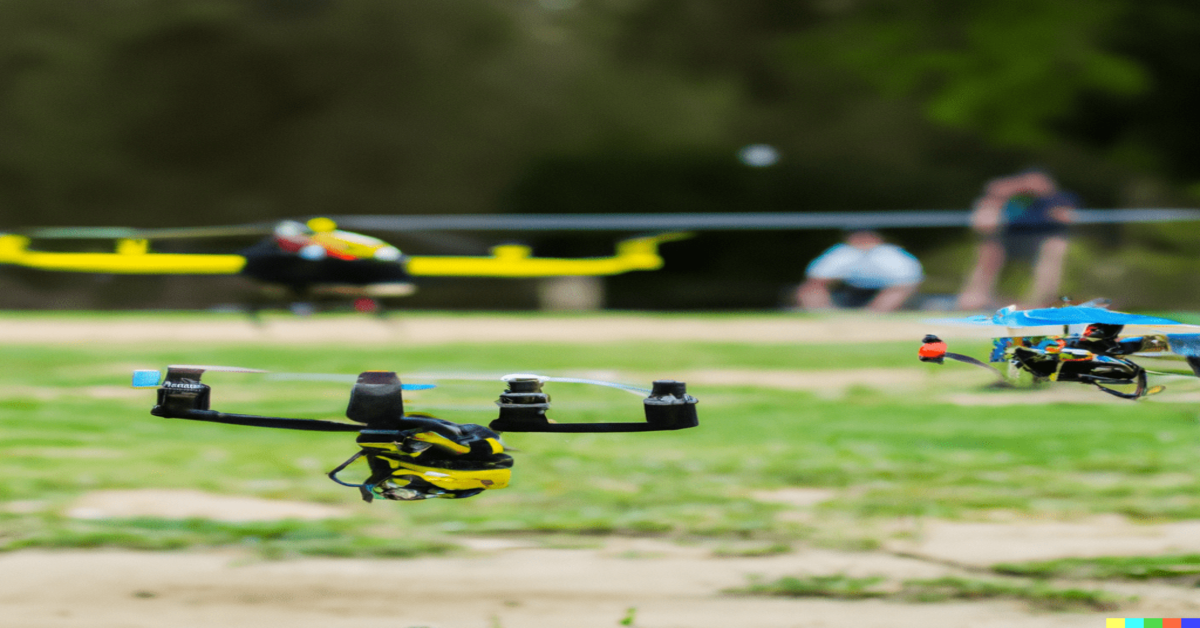
FPV Drone Flying Laws or Regulations:
FPV drone regulations vary by country and region. Before flying, it’s important to check local laws and regulations. In general, FPV drones should not be flown in populated areas, near airports, or over sensitive government facilities. Regulations may also exist for commercial use of FPV drones.
Challenges of Flying an FPV Drone:
While FPV drones offer several benefits, they also come with some challenges. Firstly, the real-time video feed can be overwhelming for some pilots, especially for those who are new to flying drones. Additionally, the precise control required for FPV flying can be challenging for some pilots, especially for those who are not used to flying traditional drones.
Another challenge is the cost of FPV equipment. FPV drones and their associated equipment, such as headsets and screens, can be expensive. Furthermore, the technology used in FPV equipment is constantly evolving, which can make it difficult to keep up with the latest developments.
FPV Drone Flying Tutorial:
Below video gives details on how to fly a FPV drone for beginners:
FPV drone Training Simulator:
An FPV (first-person view) drone training simulator is a software that allows drone enthusiasts to practice and improve their flying skills before operating a real drone.
It offers a realistic simulation environment that mimics the experience of flying an actual drone with a first-person view. The simulator includes various challenges and obstacles that the user must navigate, helping to improve their reaction time, hand-eye coordination, and flight control skills.
Some FPV drone training simulators also include multi-player modes, allowing users to compete with other pilots from around the world. Overall, an FPV drone training simulator is an excellent tool for preparing pilots for real-life scenarios and helping to build confidence and expertise in flying drone.
FPV Drone Flying Tips to Improve Your Drone Flying Skills:
Flying a drone can be a fun and rewarding experience, but it can also be a bit intimidating if you’re new to it. To help you get the most out of your drone flying experience, here are some tips to improve your drone flying skills.
First, practice flying in an open area with no obstacles. This will help you to get a feel for the controls and become more comfortable with the drone.
Second, make sure to follow all FAA regulations. Doing so will help ensure your safety, as well as the safety of those around you.
Third, read the manual that came with your drone. Knowing how to operate the drone properly will increase your safety and enjoyment.
Finally, be sure to take a break when needed. Flying a drone can be tiring, so give yourself a break to rest and recuperate. With a bit of practice and dedication, you can become a proficient drone flyer.
Common problems with FPV Drone Flying:
FPV drone flying is a popular hobby that has gained a lot of traction in recent years. However, it can be difficult to get started, especially if you’re new to the hobby. There are many common problems that new FPV drone pilots face, and it’s important to be aware of these issues so that you can avoid them.
1. Interference:
One of the biggest issues that new FPV drone pilots face is interference. This can come from many different sources, including other drones, Wi-Fi signals, and even cell phones. Interference can cause your drone to lose signal, making it difficult to control.
2. Range:
Another common problem with FPV drones is range. While some drones can fly for miles, others can only fly for a few hundred feet. This can make it difficult to fly your drone in large open spaces, or to fly it over long distances.
3. Battery Life:
Battery life is also a big issue with FPV drones. Many drones only have a short battery life, which can make it difficult to fly for an extended period of time. This can be especially frustrating if you’re trying to fly your drone over a large area, or if you’re trying to fly it for a long time.
4. Latency:
Latency is another common problem with FPV drones. This refers to the delay between the time you make a control input and the time your drone responds. Latency can make it difficult to control your drone, especially in high-speed flying.
5. Wind Resistance:
Wind resistance is another issue that can make it difficult to fly an FPV drone. The wind can push your drone off course, making it difficult to control. Additionally, high wind can make it difficult to fly your drone in certain conditions.
6. Cost:
Finally, cost is another common problem with FPV drone flying. While there are many affordable options available, some high-end drones can be very expensive. Additionally, there are also many accessories that you may need to purchase, such as extra batteries, chargers, and replacement parts.
7. Learning Curve:
The learning curve for FPV drone flying can be steep, especially for those who are new to the hobby. It can take time to learn how to fly your drone, and you may need to make a number of mistakes along the way. However, with practice, you can become a skilled FPV drone pilot.
Affordable FPV Drone:
Below is the best FPV Drone kit with goggles ready to fly:
Conclusion on FPV Drones:
FPV drones offer a first-person view of the flight to the pilot and come in various types such as racing, freestyle, aerial photography, agriculture, and inspection.
Choosing an FPV drone involves considering factors such as flight time, camera quality, control range, agility and speed, and durability. The components of an FPV drone include a flight controller, FPV camera, video transmitter and receiver, battery, motors, and propellers.
To fly an FPV drone, one needs to grasp the basic setup where the camera transmits the video in real-time to the pilot’s controller. Flying an FPV drone initially may pose a challenge, but regular practice can lead to mastery of the basics and enjoyment of the flight experience.
We would love to hear your thoughts on FPV drones! Do you have any questions or experiences you’d like to share about these fascinating flying machines? Don’t hesitate to reach out and share your thoughts. Your feedback is valuable to us and the community of FPV drone enthusiasts. Let’s start a conversation!
Frequently Asked Questions (FAQs):
Yes, but there are certain regulations and restrictions for flying FPV (First-Person View) drones in India.
In India, drones are allowed under the Drone Regulation Policy of 2018, which classifies drones into five categories and requires registration and operational approvals for all drones except for nano drones.
India allows the use of drones under the following categories:
1. Nano drones: Weighing less than 250 grams, these drones do not require any registration or approval from the DGCA.
2. Micro drones: Weighing between 250 grams to 2 kg, these drones require registration with the DGCA and approval from the local police for flying in urban areas.
3. Small drones: Weighing between 2 kg to 25 kg, these drones require approval from the DGCA and permission from the local police for flying in urban areas.
4. Large drones: Weighing more than 25 kg, these drones require approval from the DGCA and permission from the Ministry of Defence for flying in restricted areas.
In India, the Civil Aviation Authority (CAA) has set a maximum weight limit for drones at 25 kilograms, which includes the weight of the drone and its payload. Flying drones above this limit is illegal and can result in fines and other penalties.
Commercial use of drones in India has been increasing in various industries such as agriculture, real estate, delivery, and inspection, among others, due to their ability to perform tasks efficiently and effectively.
In the United States, the Federal Aviation Administration (FAA) requires all drone pilots to register their drones and obtain a Remote Pilot Certificate if they plan to fly their drone commercially. The FAA also has specific guidelines for flying drones within the national airspace system, including altitude restrictions, no-fly zones, and distance requirements from people and other aircraft.
On average, most consumer-grade FPV drones can fly for around 15 to 20 minutes with a fully charged battery.
Yes, you need a license to fly FPV (First Person View) drones in India. The government of India requires all drone operators to obtain a unique identification number (UIN) and a permit to fly a drone commercially. For flying a drone for recreational purposes, the government requires users to register their drones and obtain a no-objection certificate (NOC) from the Ministry of Civil Aviation.
Related Posts:
- LiDAR Drones: Revolutionizing Remote Sensing and Data Collection (2023)
- The Revolutionary Selfly Drone: Changing the Game of Personal Photography (2023)
- Mastering Different Flight Modes for Drones: A Comprehensive Guide (2023)
- Revolutionizing Innovation: Self-Flying Drones Take Technology to New Heights (2023)
